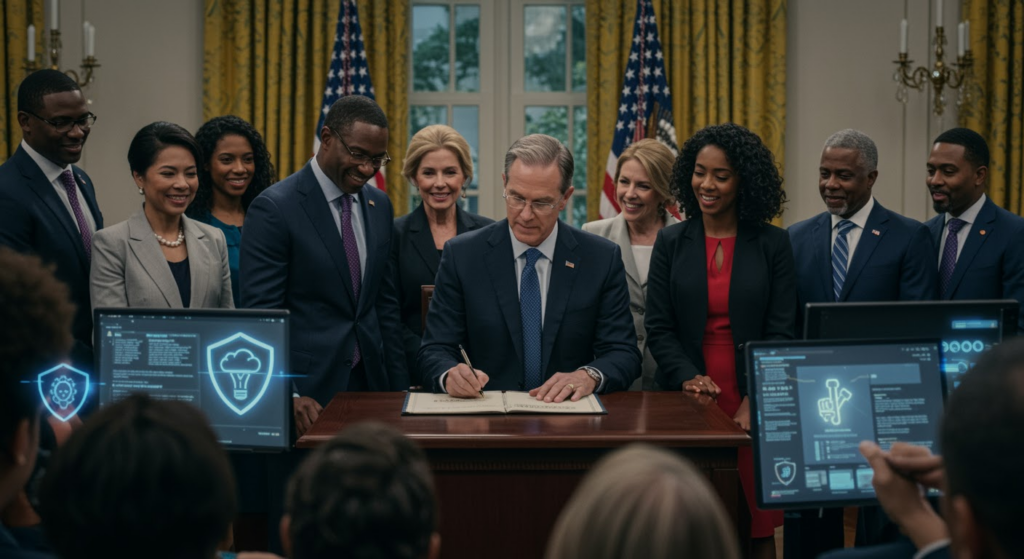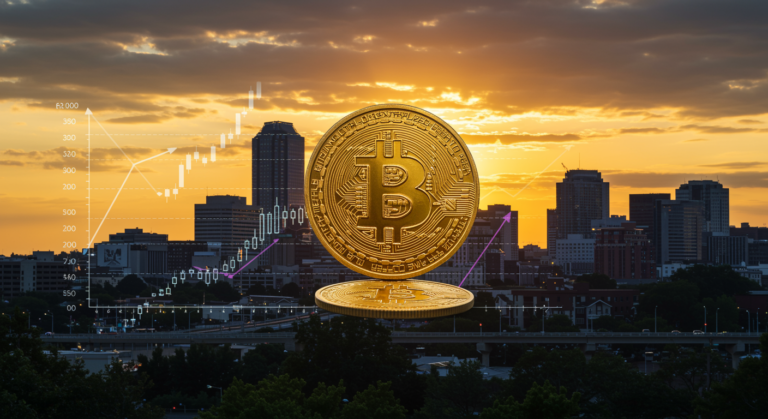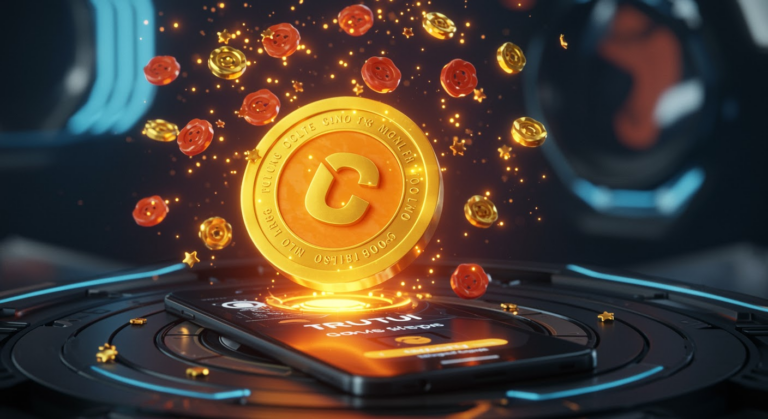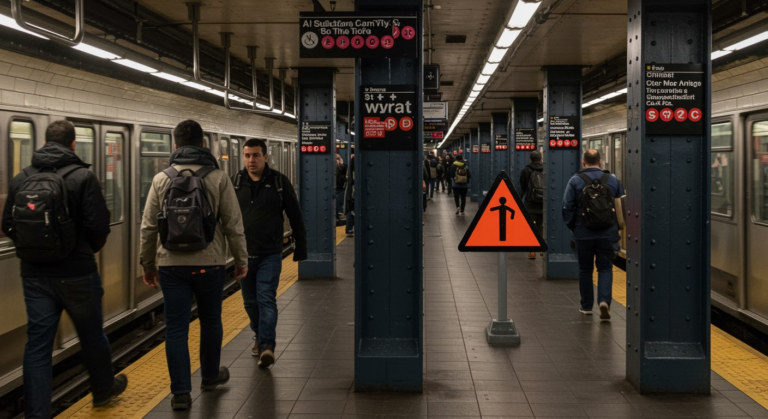
Deepfake Pornography Victim Attends White House Bill Signing
The Rise of Deepfake Pornography and Historic Legislative Response
In an era where technology blurs reality, deepfake pornography has emerged as a devastating tool for harm, affecting thousands without their consent. The United States recently marked a turning point by passing the Take It Down Act, a groundbreaking law that criminalizes the creation and distribution of nonconsensual AI-generated intimate imagery. What made this moment even more poignant was the attendance of a deepfake pornography victim at the White House ceremony, symbolizing hope for those who’ve suffered in silence.
Have you ever imagined how quickly a manipulated video could shatter someone’s life? This legislation not only addresses the core issues but also empowers victims to fight back, ensuring that deepfake pornography doesn’t go unpunished.
Understanding the Take It Down Act: A Bipartisan Victory for Victims
The Take It Down Act sailed through Congress with overwhelming support, passing the House 409-2 and the Senate without a hitch—proof that protecting people from deepfake pornography transcends political divides. This law makes it a federal crime to share or publish nonconsensual intimate content, whether it’s real or artificially created, and puts the Federal Trade Commission (FTC) in charge of rapid enforcement.
Tech giants like Meta, TikTok, and X have thrown their weight behind it, committing to remove flagged material within 48 hours. It’s a clear signal that the fight against deepfake pornography requires everyone at the table.
Key Elements of the Legislation
- It explicitly criminalizes the spread of deepfake pornography without consent.
- Platforms must act fast, removing harmful content in under two days after a report.
- The FTC gains new powers to investigate violations, with stiff penalties like fines and jail time for offenders.
These provisions aren’t just words on paper; they’re real tools for victims to reclaim control. For instance, imagine reporting a deepfake video and seeing it vanish almost overnight—what a game-changer for someone enduring ongoing harassment.
Amplifying Victims’ Voices at the White House
The deepfake pornography victim’s presence at the bill signing was more than symbolic—it was a stark reminder of the human toll behind these crimes. For years, individuals have battled to erase manipulated images that invade their privacy and dignity, often facing an uphill fight against anonymous perpetrators.
By inviting a survivor to this event, the administration highlighted a commitment to change. It’s like saying, “You’re not alone anymore.” This step forward could inspire others to speak out, turning personal stories into collective action.
Melania Trump’s Role in Combating Deepfake Exploitation
First Lady Melania Trump didn’t just endorse the Take It Down Act; she championed it, working with lawmakers and tech leaders to push it across the finish line. In her statements, she emphasized how this law safeguards “the dignity, privacy, and safety of our children,” framing deepfake pornography as a threat we all must address.
Her involvement bridged gaps, drawing bipartisan attention to an issue that affects real people every day. Think about it: advocacy from someone in her position can shift public perception, making deepfake prevention a priority rather than an afterthought.
Exploring the Dangers of Deepfake Pornography
Deepfake pornography uses sophisticated AI to swap faces or bodies in explicit videos, creating content that’s disturbingly realistic and deeply invasive. This isn’t just about celebrities; everyday folks, including teens and professionals, are targeted, leading to severe emotional scars.
- AI tools make it easy to produce high-quality fakes that spread like wildfire online.
- Anyone can be a victim, from your neighbor to a public figure, amplifying the risk in our connected world.
- The fallout includes mental health crises, ruined reputations, and even career-ending consequences.
What’s scarier is how quickly this content can circulate—often before the victim even knows. If you’re dealing with something like this, remember, resources exist to help you navigate it.
The Urgent Need for Action Against Deepfake Pornography
Research shows that most deepfake content online is sexually explicit and shared without permission, turning the internet into a breeding ground for abuse. A study from UNODC highlighted how this form of harassment persists, causing lasting trauma that traditional methods can’t erase [6].
The Take It Down Act steps in here, offering a legal pathway to remove deepfake pornography and hold creators accountable. It’s not perfect, but it’s a start in rebuilding trust in digital spaces. How can we, as a society, ensure this law’s success? By staying informed and supportive.
Support from Tech and Legislative Allies
Major tech companies have aligned with this effort, recognizing that deepfake pornography undermines their platforms’ integrity. From Meta’s content policies to TikTok’s rapid response teams, these firms are adapting to enforce the new rules.
| Stakeholder | Role | Impact |
|---|---|---|
| Congress | Passed the bill with strong bipartisan votes | Establishes a federal framework for protection |
| Melania Trump | Led advocacy efforts | Brought national focus and cross-party support |
| Tech Companies | Endorsed and implemented removal protocols | Enables quick action against deepfake pornography |
| FTC | Oversees enforcement | Ensures accountability and swift justice |
This collaboration shows that tackling deepfake pornography requires a team effort, blending policy with practical solutions.
Balancing Legal Rights and Protections
Some worry that laws like the Take It Down Act might infringe on free speech, but experts argue that nonconsensual deepfake pornography doesn’t qualify as protected expression [3]. It’s about drawing a line where privacy and dignity take precedence.
In a hypothetical scenario, if someone creates a deepfake to harass, the law ensures they’re held responsible without stifling legitimate creativity. This balance is key to making these protections work long-term.
Transforming Lives and Society Through New Protections
For victims of deepfake pornography, this act means faster relief and a chance to restore their sense of control. No longer do they have to chase down content that retraumatizes them daily.
On a larger scale, it discourages potential abusers and reinforces our commitment to ethical tech use. Simple steps, like educating yourself on digital rights, can make a difference.
If you’re affected, here’s actionable advice: Document everything, report to platforms immediately, and seek support from organizations like those linked in our resources. Your story matters.
Implementing Change: The Path Ahead
Now that the Take It Down Act is law, the real work begins with tech platforms upgrading their systems and the FTC stepping up enforcement. Public education will play a huge role, teaching people how to spot and report deepfake pornography.
- Companies need user-friendly reporting tools for quick responses.
- Partnerships between law enforcement and tech will keep things effective.
- Raising awareness ensures everyone knows their rights and options.
Looking ahead, staying vigilant could prevent the next wave of deepfake abuses. What steps will you take to support this cause?
Final Thoughts: Empowering a Safer Digital World
The White House event, with a deepfake pornography victim in attendance, wasn’t just a ceremony—it was a promise of better days ahead. By criminalizing nonconsensual AI imagery and prioritizing removal, we’re setting a global standard for digital respect.
As this law takes effect, let’s keep the conversation going. Share your thoughts in the comments, explore more on digital privacy, or spread the word to help others. Together, we can make deepfake pornography a thing of the past.
References
1. Politico. “House sends intimate deepfakes bill to Trump’s desk.” Link
2. The Independent. “Take It Down Act: Trump signs bill targeting deepfakes.” Link
3. CyberScoop. “Take It Down Act passes with First Amendment considerations.” Link
4. YouTube Video. [Video source]. Link
5. JHU APL. “Defeating Coercive IOs.” Link
6. UNODC. “TOC Convergence Report 2024.” Link
7. Experts Blog. [General reference]. Link
deepfake pornography, Take It Down Act, nonconsensual deepfakes, White House bill signing, deepfake victims, AI-generated pornography, digital privacy laws, online abuse prevention, Melania Trump advocacy, federal AI regulations







